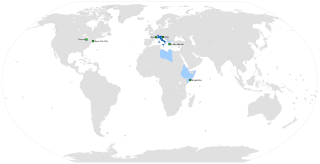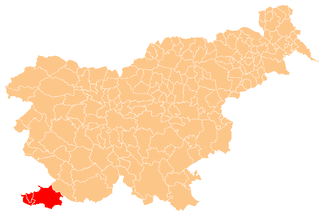 W
WSlovenia has been a meeting area of the Slavic, Germanic, Romance, and Uralic linguistic and cultural regions, which makes it one of the most complex meeting point of languages in Europe. The official and national language of Slovenia is Slovene, which is spoken by a large majority of the population. It is also known, in English, as Slovenian. Two minority languages, namely Hungarian and Italian, are recognised as co-official languages and accordingly protected in their residential municipalities. Other significant languages are Croatian and its variants and Serbian, spoken by most immigrants from other countries of former Yugoslavia and their descendants. Slovenia is ranked among the top European countries regarding the knowledge of foreign languages. The most often taught foreign languages are English and German, followed by Italian, French, and Spanish.
 W
WCroatian is the standardized variety of the Serbo-Croatian language used by Croats, principally in Croatia, Bosnia and Herzegovina, the Serbian province of Vojvodina, and other neighboring countries. It is the official and literary standard of Croatia and one of the official languages of the European Union. Croatian is also one of the official languages of Bosnia and Herzegovina and a recognized minority language in Serbia and neighboring countries.
 W
WGottscheerish is an Upper German dialect which was the main language of communication among the Gottscheers in the enclave of Gottschee, Slovenia, before 1941. It is occasionally referred to as Granish or Granisch in the United States, a term also used for Slovene. Today there are only a few speakers left in Slovenia and around the world.
 W
WHungarian is a Uralic language spoken in Hungary and parts of several neighbouring countries. It is the official language of Hungary and one of the 24 official languages of the European Union. Outside Hungary, it is also spoken by communities of Hungarians in present-day Slovakia, western Ukraine (Subcarpathia), central and western Romania (Transylvania), northern Serbia (Vojvodina), northern Croatia, northeastern Slovenia and eastern Austria.
 W
WItalian is a Romance language of the Indo-European language family. Italian is the closest national language to Latin, from which it descends via vulgar Latin of the Roman Empire. Taking into account both national and regional languages, it is seen that Italian and Sardinian are together the least differentiated from Latin. Italian is an official language in Italy, Switzerland, San Marino, and Vatican City. It has an official minority status in western Istria.
 W
WThe Italian language is an officially recognized minority language in Slovenia, along with Hungarian. Around 3,700 Slovenian citizens speak Italian as their mother tongue. Italian has a strong presence in Slovenia, both historical and current. An estimated 15% of Slovenians speak Italian as a second language, which is one of the highest percentages in the European Union.
 W
WSerbian is the standardized variety of the Serbo-Croatian language mainly used by Serbs. It is the official and national language of Serbia, one of the three official languages of Bosnia and Herzegovina and co-official in Montenegro and Kosovo. It is a recognized minority language in Croatia, North Macedonia, Romania, Hungary, Slovakia, and the Czech Republic.
 W
WSerbo-Croatian – also called Serbo-Croat, Serbo-Croat-Bosnian (SCB), Bosnian-Croatian-Serbian (BCS), and Bosnian-Croatian-Montenegrin-Serbian (BCMS) – is a South Slavic language and the primary language of Serbia, Croatia, Bosnia and Herzegovina, and Montenegro. It is a pluricentric language with four mutually intelligible standard varieties, namely Serbian, Croatian, Bosnian, and Montenegrin.
 W
WSlovene, or alternatively Slovenian, is a South Slavic language spoken by the Slovenes. It is spoken by about 2.5 million speakers worldwide, the majority of whom live in Slovenia, where it is one of the three official languages. As Slovenia is part of the European Union, Slovene is also one of its 24 official and working languages.
 W
WVlax Romani is a dialect group of the Romani language. Vlax Romani varieties are spoken mainly in Southeastern Europe by the Romani people with Vlach ancestry. Vlax Romani can also be referred to as an independent language or as one dialect of the Romani language. Vlax Romani is the second most widely spoken dialect subgroup of the Romani language worldwide, after Balkan Romani.